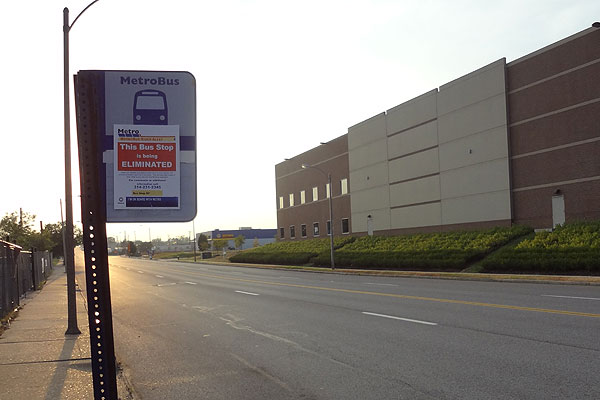
I'm always on the lookout for new public transportation ideas, so this piece at The Atlantic Cities caught my eye: "Building a Better Bus Route, With No Defined Stops." It's an idea from a civil-engineering prof at the University of Illinois, and in short, the bus would have a vaguely defined route—a "tube"—going generally in one direction and back while picking up people who request rides. The author describes it as "an entirely new transit concept that combines the regularity of a fixed-route bus system with the range of a car service," but it reminds me a lot of one of my favorite urban innovations: Cuba's collective taxis.
Havana's public transportation, when I was there, was awful. The buses were more like horse trailers—the infamous "camels"—stuffy, crowded, and downwind from the semi-truck that pulled it, spewing smoke into the "bus," which could be filled with a couple hundred people, many of them chain-smoking. (They've since been replaced with regular city buses.) So Cubans, who regularly have to innovate around their country's lack of resources and unresponsive bureaucracy, came up with a two-tiered taxi system. There are shiny new taxis for tourists that look and operate exactly like taxis everywhere else in the world, and massive old American junkers that operate almost exactly like the no-stop bus route:
The old cars like Chevrolets from the '50 recognizable by their taxi signs at the front window. They ride a one way route, Cubans stand along the route and hop in and out. The Almendrones (Cuban slang for old car) start their route at Parque Central at the corner of Prado and Neptuno, this is the main route that go from the corner of Parque Central at the Italian restaurant to Miramar or Marianao.
In essence, there's a premium taxi that takes you and only you where you want to go and costs about as much as taxis anywhere, and a collective taxi that's somewhere in between a taxi and a bus. If you hail one, it'll take you where you're going within a reasonable range, but it might stop for other people if there happens to be room. So it's slower, but it's much cheaper; the only thing in America I've found like it, save for the no-stop idea, is college "drunk vans."
It's only my second-favorite Cuban civic innovation, though. My favorite is el último: when you go somewhere and there's a really long line—it's a socialist country, there are lots of them—you ask el último? and whoever's last in line tells you that they're the last. Then you're it, and the process repeats itself. It obviates the need for a line itself, sort of like the flashing beepers they give you at Applebees but with a dollop of social cohesion:
We accomplish a lot with these four words. Everyone knows immediately the line’s sequence which instills instant order to an inherently disorderly affair, plus it allows us to abandon the line concept altogether. Once you know who you follow by taking the último, and once someone shows up to take the último from you, there’s no need to actually stand in line. The system gives us the freedom to disperse and loiter, catch some shade or take a load off.
Photograph: pasa47 (CC by 2.0)



